Logic Supply Core-ML320 Fanless Industrial NUC Review
by Ganesh T S on April 30, 2014 3:45 PM EST- Posted in
- NUC
- Industrial PC
- Passive Cooling
- Logic Supply
Power Consumption and Thermal Performance
The power consumption at the wall was measured with the display being driven through the mini-HDMI port. In the graphs below, we compare the idle and load power of the Core-ML320 with other low power desktop / industrial PCs. For load power consumption, we ran Furmark 1.12.0 and Prime95 v27.9 together.
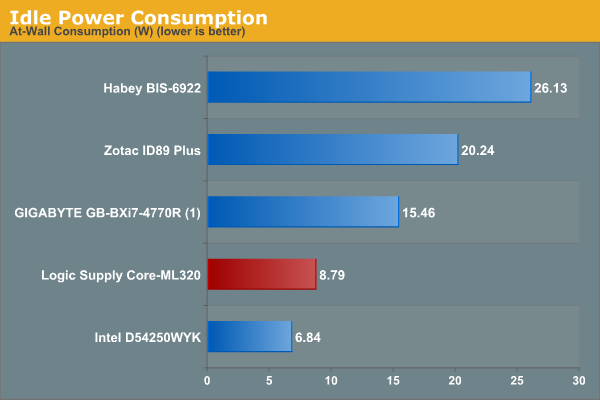

The Aleutia Relia was one of the first fanless units that we evaluated for thermal throttling. The Relia ended up getting throttled when subject to heavy loading even at room temperature (72 F). Aleutia had to get back to the drawing board after our findings were published. After that exercise, I was looking forward to evaluating other fanless PCs in order to gauge their thermal performance under heavy loading. The Habey BIS 6922 came out with flying colours. The i5-4250U has a Tjmax of 100C, and we found that the maximum temperature reached even after 4 hours of full loading of both CPU and GPU was around 95 C only (ambient at 70 F).
The above screenshot (taken just prior to stopping the power virus stress test) shows that the CPU isn't thermally throttled. Further light on this aspect is shed by the two graphs below. In the first graph, we see a plot of the various clock frequencies in the system and how they vary as the power virus test makes progress. For the Core i5-4250U, Intel advertises base clock speeds of 1.3 GHz for the cores and 200 MHz for the GPU. The Core-ML320 advertises 1.9 GHz for the processor. At the beginning of the test, we find that there is a bit of give-and-take between the CPU and the GPU for the TDP budget. The GPU cranks up to 900 MHz while the CPU cores play second fiddle by dropping down to the base frequency (1.3 GHz). Eventually, a steady state is reached with the GPU oscillating between 200 and 600 MHz, while the CPU cores stay put at the advertised 1.9 GHz. Upon removal of the load, the CPUs go down to their idle frequency (around 800 MHz), but, surprisingly, the GPU remains at 600 MHz.
The second graph shows the temperatures of various components in tandem with the frequency graph on top. As noted before, the temperature of the CPU is never allowed to reach Tjunction. The system takes a little bit longer than the Habey BIS-6922 to get back to idling temperature after load removal. That is to be expected because of the difference in the thermal design.
We conclude this section with a thermal profile of the case after four hours of being subject to full CPU and GPU loading. Temperatures are noted in the format (F / C).
(Note: Chassis images above are stock, not of the review unit)


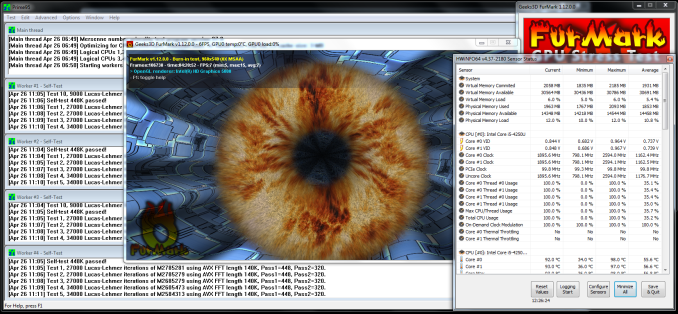
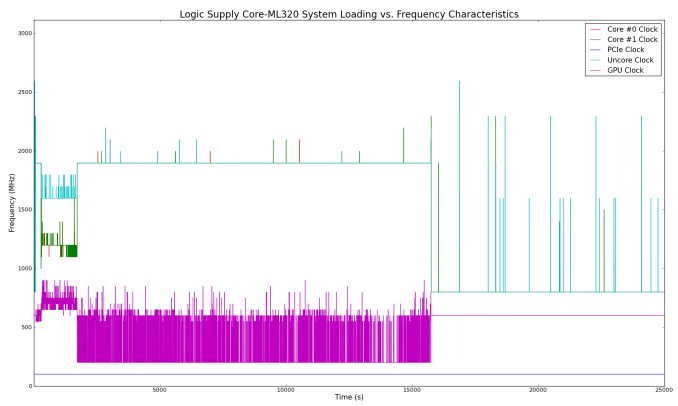
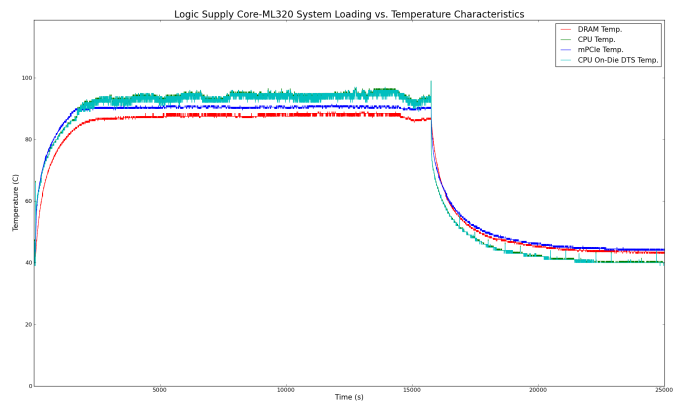
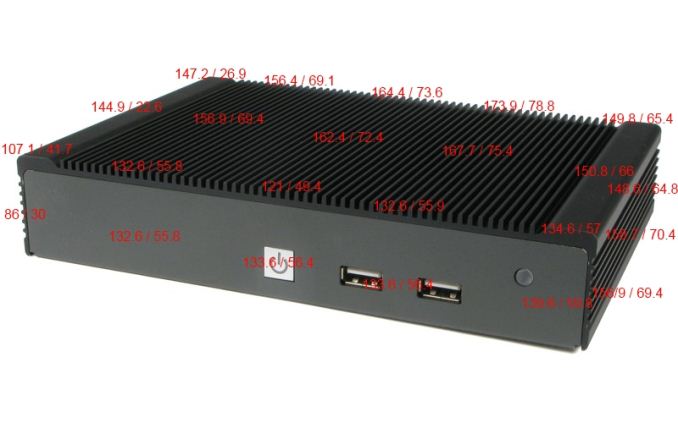
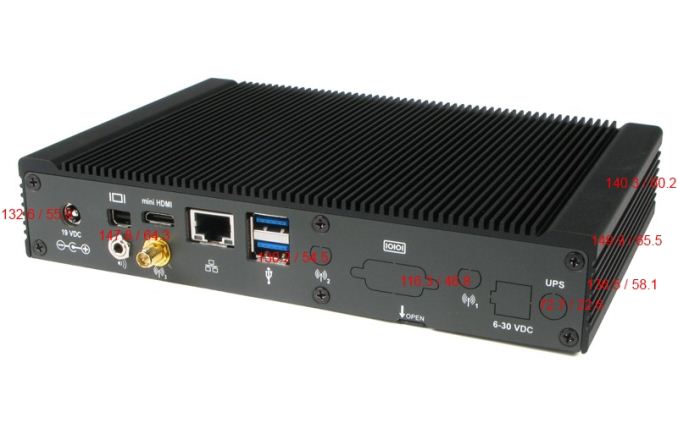








31 Comments
View All Comments
toyotabedzrock - Thursday, May 1, 2014 - link
You temp readings on the outside of the case do not have correct celsius to fahrenheit conversion. In the first image on the left you will see conversion errors.tarqsharq - Friday, May 2, 2014 - link
Also, they really need to do a border around the font to make it more legible...Thermalzeal - Friday, May 2, 2014 - link
I have some industrial clients that we've been looking at upgrading their PC's. After Kabini's launch and that awesome DC 19v mobo by Asrock, I've specked a system for $475 with all passive cooling. $1300 is way too high. My system has a 240GB SSD, 8GB of ram and the best processor in the Kabini lineup.Wall Street - Saturday, May 3, 2014 - link
I like the dropdown menu for the comparison table. Very cool.PaigeKnowleskag - Saturday, May 3, 2014 - link
goodhollovoid7 - Saturday, May 3, 2014 - link
I work in a large factory and can see these things working out very well in the equipment there. There is quite a bit of dust in some areas, and most machine cpus fall victim to it from the cooling fans getting plugged up, then fried as a result. As it is, nearly all PLC's now a days are fanless for that reason, the computer that drives the control interfaces should be as well.Roy2001 - Tuesday, May 6, 2014 - link
Pay extra $1000 for fanless?seamanjeff - Wednesday, May 7, 2014 - link
We have 4 of these in use displaying production schedules in a dirty/wet paper mill environment. The i3 was overkill so we went back to the Atom - with Ubuntu LTS, openbox and Chromium they are pretty sweet systems. Work like greased lightning. I no longer even see Windows in the rear-view mirror.M/2 - Friday, May 9, 2014 - link
I have a Mac Mini Server w/ i7 Quadcore and 2 SSDs that costs the same or less, has the same or better performance, and doesn't look like an industrial black box.nerd1 - Sunday, May 11, 2014 - link
I am actually among their target audience, and personally I think being fanless is not a big deal compared to being weatherproof. Are there ANY weatherproof embedded computer out there?